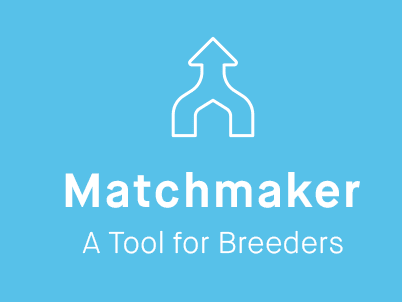You’ve Embark-tested your dog and received the most informative DNA results available. Now, how do you use those results to help find potential mates to complement your breeding goals? Enter Matchmaker Embark’s advanced, custom breeding tool that makes it easy to assess inherited disease mutations in potential mates and view predicted average litter COI.
Discover all you can do
Matchmaker enables breeders to pose theoretical crosses between available, intact dogs in the Embark database for more informed mate selection.
- Breed availability — There are more than 40 breeds available on Matchmaker
- Perform in-depth analyses —Compare and evaluate the number of variants for genetic health risks and coat color and trait genotypes
- View average litter COI — Get the predicted coefficient of inbreeding without having to email Embark
- Get access on demand — Use the tool anytime via the results portal in your dog’s Embark profile
- Share with co-breeders — Check out Embark’s Shared Owner feature
Get results in 3 steps
If Matchmaker is available for your breed, your dogs have been DNA tested with an Embark for Breeders test, they’ve been marked as intact, and you have created a kennel profile, you’re all set to opt-in. In Breeder Tools, you’ll see Dog Settings and then all your dogs listed. Click on Include in Matchmaker, then set Breed to Public. (We encourage you to set Health and Traits to Public in the interest of transparency.) You’re ready to start using Matchmaker.
- Access your portal: Log in to your account, click on Breeder Tools at the top, then click on Matchmaker. (You can also access Matchmaker from the Health tab in your dog’s profile).
- Select your dog: Using the dropdown menu, choose the dog for which you’d like to compare genotypes and COI.
- View your results*: The results shown will include the number of variants for genetic health risks, the predicted average coefficient of inbreeding for a potential litter, and coat color and trait genotypes. From this, you can determine the expected genotypes and phenotypes in a theoretical litter from the two dogs. Before breeding, be sure to review the prospective mate’s complete Embark profile and non-genetic tests, too, so you have the full picture.
As always, if you have questions about how to apply your results, or if Matchmaker doesn’t include your breed, feel free to contact our Customer Support team: we’re here to help.
*We encourage you to speak with a veterinarian regarding the meaning of your pet’s Genetic Information or any questions that arise from your use of our Services. Please see embarkvet.com/tos for our complete terms of service.













